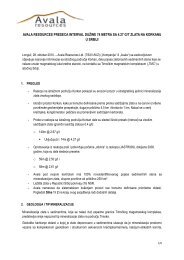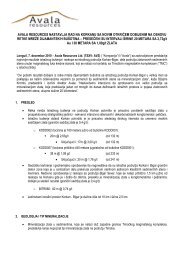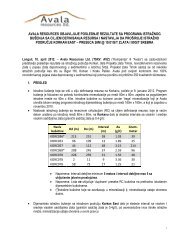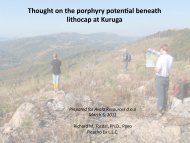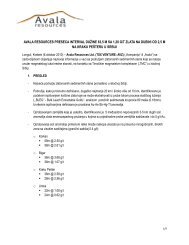Sillitoe, 2010 - Avala Resources Ltd.
Sillitoe, 2010 - Avala Resources Ltd.
Sillitoe, 2010 - Avala Resources Ltd.
Create successful ePaper yourself
Turn your PDF publications into a flip-book with our unique Google optimized e-Paper software.
Anatomy of a hydrothermal<br />
breccia<br />
In general, hydrothermal breccia show systema@c facies.<br />
There is a core of highly brecciated material. Where<br />
fluidiza@on has been intense, the matrix consists of rock flour<br />
(finely milled rock) with clasts of varying sizes. In a single<br />
stage breccia, clast sizes increase in size and angularity<br />
toward the margin. Rocks immediately outside of the breccia<br />
are crackled, that is fractured in place and essen@ally can be<br />
fit together as a jig-‐saw. Inter-‐clast displacement and<br />
rounding increases toward the breccia.<br />
Mul@-‐stage breccia have complex overprin@ng facies from the<br />
subsequent events.<br />
Breccia nucleate at depth and propagate upward un@l the<br />
energy is dissipated, thereby forming conical body. The roof<br />
rocks are cut by fingers of crackle breccia to rock flour breccia<br />
which represent the upward propaga@on of the larger body.<br />
Areas of maximum permeability are along breccia margins;<br />
complex when mul@ple breccia bodies present.<br />
Where they breach the surface, they form dis@nc@ve<br />
volcanic-‐like features (see next slide)




